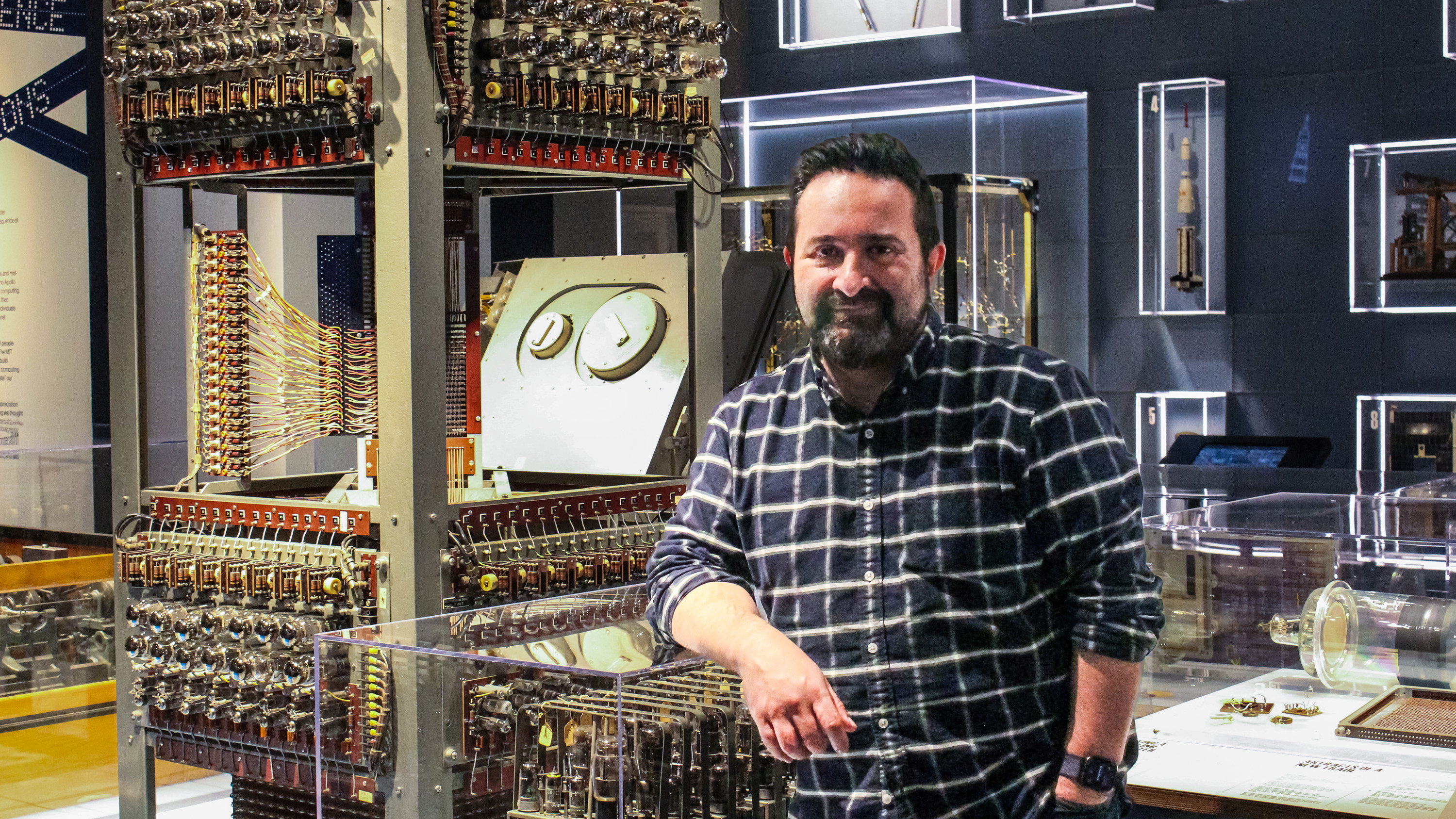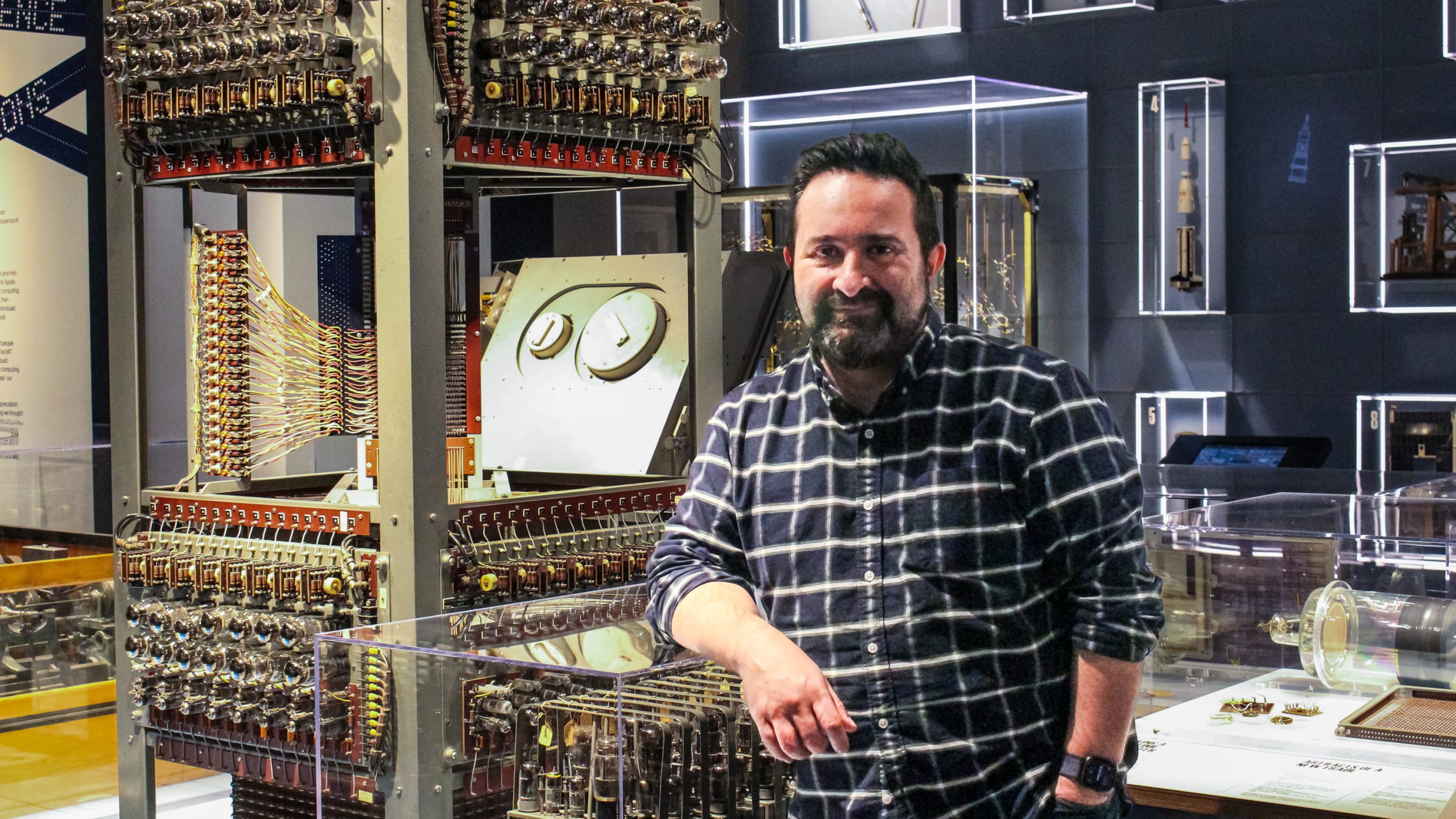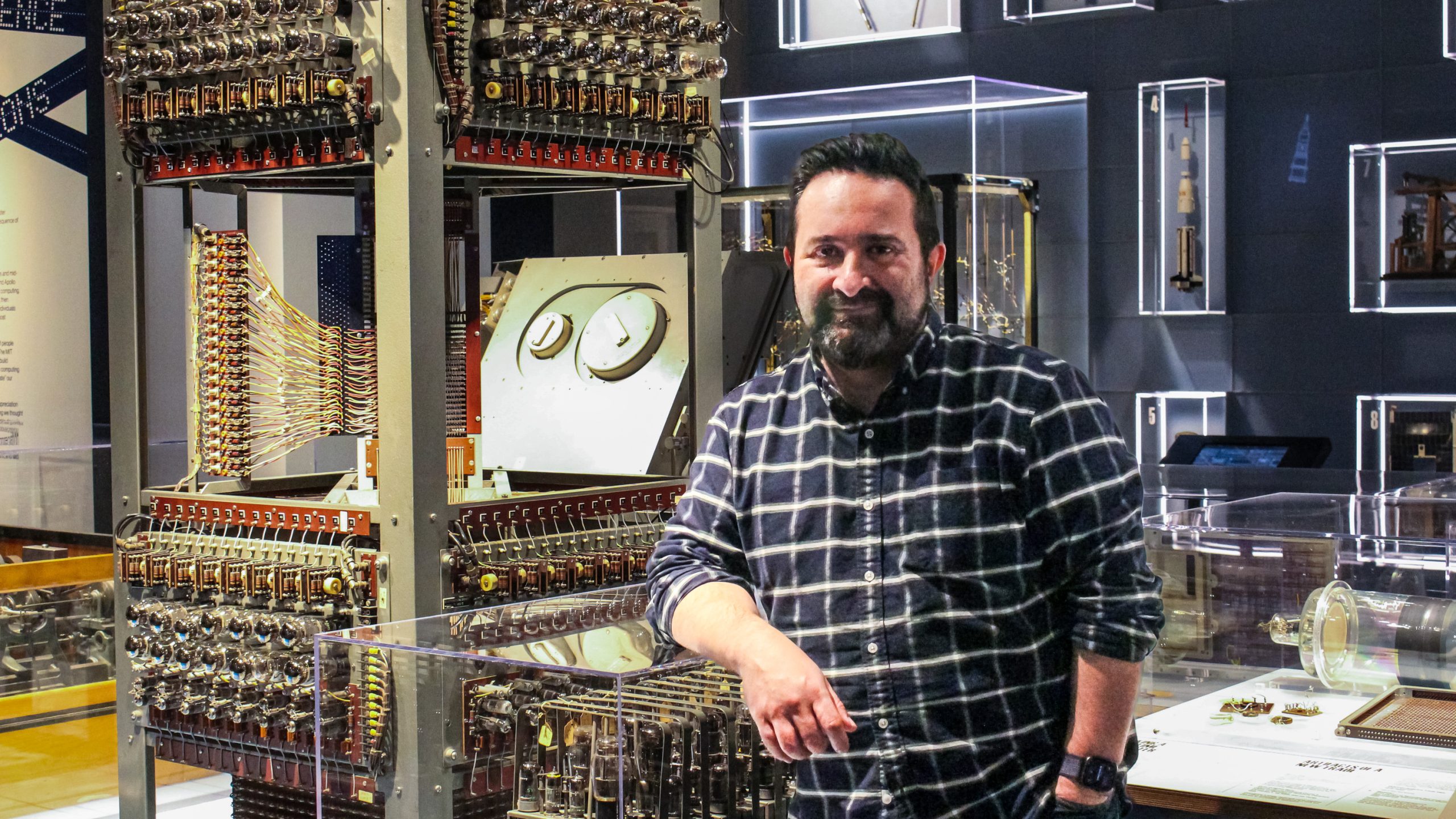
A guided tour of the new MIT Museum
Today, it has reimagined the online experience for visitors, who can now browse through more than 156,000 items from the museum’s collection and, yes, buy tickets. It’s also unveiled numerous in-gallery digital activities, ranging from listening to personal reflections on the Black experience at MIT to writing poetry with the help of artificial intelligence.
“There are over 80 different digital pieces, and many of them are interactive in some way,” Nuñez says. “It was important to us to create a hackable museum you could put your hands into and use.”
Now visitors can not only explore physical artifacts from the Institute’s long history of research and innovation but also gain insight into the MIT community—including generations of MIT alumni—through video and audio recordings featuring Institute innovators. “We want to give people a sense of the human thread through all the technology and invention,” Nuñez says.

The MIT Museum was founded in 1971 to preserve the Institute’s historical artifacts, and today its mission is to make MIT’s research accessible to everyone; the new digital platforms are therefore designed to enable even more visitors to join in the MIT experience. For example, online visitors can weigh in on questions such as “What does it mean for something to be well-engineered?” And in-person visitors can create personal avatars that appear on the huge media wall on the first floor, in an installation called The Window.
“This is an experience we created as a welcome and an insight into the MIT community,” Nuñez says, explaining that participants answer a few questions, and the generated data determines what each avatar looks like on the big screen. “It’s a representation of you, but in the community of these avatars on the wall. It’s saying you can participate at MIT. Welcome!”
What do many of the exhibits have in common? Alumni, who of course have been creating and shaping the Institute since its earliest days. Here, Nuñez shares his insights on some notable alumni-
related exhibits.
Whirlwind computer
One of the world’s first large-scale, high-speed digital computers, MIT’s Whirlwind was created in the early 1950s under the direction of Jay W. Forrester, SM ’45, a professor at MIT Sloan.
Among other Whirlwind-related objects, the museum prominently displays one 4K core memory unit. “It’s a big machine, standing taller than I am,” Nuñez says, yet today’s cell phones typically have roughly a million times more memory. “To stand next to this object is to realize that human hands had to tie all those wires. Humans were involved in all these inventions.”

